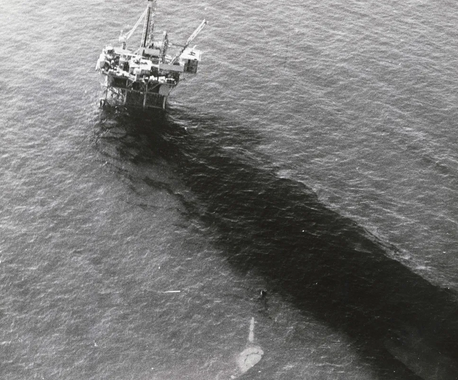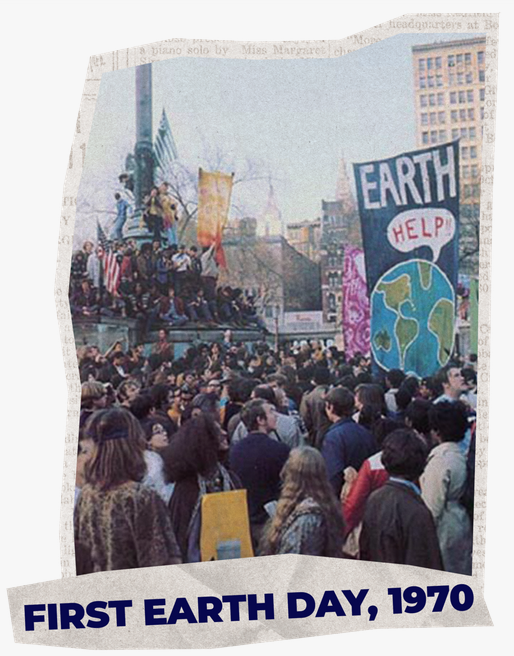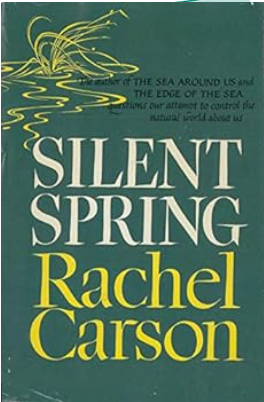April 22nd, 2024
BURLINGTON, ON
Every year on April 22, Earth Day marks the anniversary of the birth of the modern environmental movement that was founded in 1970. Let’s take a look at the last half-century of mobilization for action:
Reference is made to what the Americans did – they did lead the battle for change. Canada became part of what is now an international movement years later. Last week BurlingtonGreen did a tree planting that 500 trees in Pathfinder Park.
THE ORIGINS OF EARTH DAY
In the decades leading up to the first Earth Day , Americans were consuming vast amounts of leaded gas through massive and inefficient automobiles. Industry belched out smoke and sludge with little fear of the consequences from either the law or bad press. Air pollution was commonly accepted as the smell of prosperity. Until this point, mainstream America remained largely oblivious to environmental concerns and how a polluted environment threatens human health.
The stage was set for change with the publication of Rachel Carson’s New York Times bestseller Silent Spring in 1962. The book represented a watershed moment, selling more than 500,000 copies in 24 countries as it raised public awareness and concern for living organisms, the environment and the inextricable links between pollution and public health.
Gaylord Nelson, the junior senator from Wisconsin, had long been concerned about the deteriorating environment in the United States. In January 1969, he and many others witnessed the ravages of a massive oil spill in Santa Barbara, California. Inspired by the student anti-war movement, Senator Nelson wanted to infuse the energy of student anti-war protests with an emerging public consciousness about air and water pollution. Senator Nelson announced the idea for a teach-in on college campuses to the national media, and persuaded Pete McCloskey, a conservation-minded Republican Congressman, to serve as his co-chair.
Senator Gaylord Nelson recruited Denis Hayes, a young activist, to organize the campus teach-ins and to scale the idea to a broader public, and they choose April 22, a weekday falling between Spring Break and Final Exams, to maximize the greatest student participation.
The name Earth Day, immediately sparked national media attention, and caught on across the country. Earth Day inspired 20 million Americans — at the time, 10% of the total population of the United States — to take to the streets, parks and auditoriums to demonstrate against the impacts of 150 years of industrial development which had left a growing legacy of serious human health impacts.

The source of the spill was a blow-out on January 28, 1969, 6 miles (10 km) from the coast on Union Oil’s Platform A in the Dos Cuadras Offshore Oil Field. Within a ten-day period, an estimated 80,000 to 100,000 barrels (3,400,000 to 4,200,000 US gal)[1] of crude oil spilled into the Channel and onto the beaches of Santa Barbara County in Southern California.
By the end of 1970, the first Earth Day led to the creation of the United States Environmental Protection Agency and the passage of other first-of-their-kind environmental laws, including the National Environmental Education Act, the Occupational Safety and Health Act, and the Clean Air Act. Two years later congress passed the Clean Water Act. That is an exceptional collection of legislation that has made the world a better, healthier place.
 The principal Earth Day event in 1980, held in Washington. D.C. across from the White House, capped a decade of substantial US environmental legislation, including the Endangered Species Act, Marine Mammal Protection Act, Superfund, Toxics Substances Control Act, the Resource Conservation and Recovery Act, and of course the Clean Air Act and Clean Water Act. It had seen the creation of the Environmental Protection Agency and the banning of DDT and of lead in gasoline. Earth Day continued to expand internationally during the 80’s, as did international policy initiatives.
The principal Earth Day event in 1980, held in Washington. D.C. across from the White House, capped a decade of substantial US environmental legislation, including the Endangered Species Act, Marine Mammal Protection Act, Superfund, Toxics Substances Control Act, the Resource Conservation and Recovery Act, and of course the Clean Air Act and Clean Water Act. It had seen the creation of the Environmental Protection Agency and the banning of DDT and of lead in gasoline. Earth Day continued to expand internationally during the 80’s, as did international policy initiatives.
As 1990 environmental leaders once again organized another major campaign. This time, Earth Day went truly global, mobilizing 200 million people in 141 countries and lifting environmental issues onto the world stage. Earth Day 1990 gave a huge boost to recycling efforts worldwide and helped pave the way for the 1992 United Nations Earth Summit in Rio de Janeiro.
As the millennium approached another campaign, this time focusing on global warming and pushing for clean energy. Earth Day 2000 combined the big-picture feistiness of the first Earth Day with the international grassroots activism of Earth Day 1990. Earth Day had the internet to help link activists around the world. There were now 5,000 environmental groups worldwide on board, reaching out to hundreds of millions of people in a record 184 countries.
 Nearly one billion people around the world took action for the 40th anniversary of Earth Day. An estimated 20,000 partners took action on climate change and other environmental issues through climate rallies, Billion Acts of Green™; the objective was to engage civil leaders in plans to build a green economy, connected through the online action centre at EARTHDAY.ORG. Through the Global Day of Conversation, more than 200 elected officials in more than 39 countries took part in active dialogues with their constituents about their efforts to create sustainable green economies and reduce their carbon footprints.
Nearly one billion people around the world took action for the 40th anniversary of Earth Day. An estimated 20,000 partners took action on climate change and other environmental issues through climate rallies, Billion Acts of Green™; the objective was to engage civil leaders in plans to build a green economy, connected through the online action centre at EARTHDAY.ORG. Through the Global Day of Conversation, more than 200 elected officials in more than 39 countries took part in active dialogues with their constituents about their efforts to create sustainable green economies and reduce their carbon footprints.
It was no accident that the United Nations selected Earth Day to sign the most significant climate accord in the history of the climate and environmental movement: the Paris Agreement. On Earth Day 2016, world leaders from 175 nations broke a record by doing exactly that.
 Earth Day 2020 was the 50th Anniversary of Earth Day. Activations included activities such as the Great Global CleanUp, Citizen Science, Advocacy, Education, and Street Art. The year’s theme for Earth Day 2020 was “Climate Action.” Due to the COVID-19 pandemic, many of the planned activities were moved online. Commemorating the 50th anniversary of Earth Day in the United States. In total, over 1 billion people worldwide participated in Earth Day actions, and 100 million observed the 50th anniversary in what is being referred to as the largest online mass mobilization in history.
Earth Day 2020 was the 50th Anniversary of Earth Day. Activations included activities such as the Great Global CleanUp, Citizen Science, Advocacy, Education, and Street Art. The year’s theme for Earth Day 2020 was “Climate Action.” Due to the COVID-19 pandemic, many of the planned activities were moved online. Commemorating the 50th anniversary of Earth Day in the United States. In total, over 1 billion people worldwide participated in Earth Day actions, and 100 million observed the 50th anniversary in what is being referred to as the largest online mass mobilization in history.
Where are we today? The Ontario government wavers about Climate Change – and there are still deniers.
What is clear today is that we are perilously close to losing the Climate Change battle.
Make today your day to declare that you are the biggest part of saving the planet.
We are that close to losing it all.
If citizens of the world rise up in a united call for the creativity, innovation, ambition, and bravery that we need to meet our climate crisis and seize the enormous opportunities of a zero-carbon future this battle can be won.
























Leave a Reply